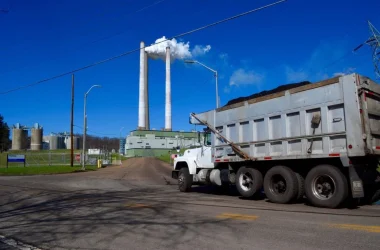BECKLEY, W.Va. — About 23 percent of the state’s workforce works in low-wage jobs, according to a report released Friday from the West Virginia Center on Budget and Policy.
Low-wage workers in West Virginia are more likely to be female, younger, and less educated, the report said. Minorities are also more likely to earn low wages.
The center released its 10th annual State of Working West Virginia Friday. The West Virginia Center on Budget and Policy is a public policy research organization that is nonpartisan, nonprofit and statewide.
Each year, the center looks at employment conditions in the Mountain State. Its report focused on low-wage work including demographics, industries that employ low-wage workers and geographic factors.
To define low-wage workers, the report used the figure of 150 percent of the federal poverty level. The report said this would be $11.59 per hour, or $24,108 per year for working West Virginians.
The report found low-wage industries are growing while nonlow-wage industries decline. The report said employment in low-wage industries has grown 14.5 percent since 2001 while employment in nonlow-wage industries decreased by 2.8 percent. Overall employment has grown by 0.1 percent, the report said.
The report also said 25.3 percent of workers in low-wage jobs live in poverty.
“Low-wage work has a profound impact on West Virginia’s economy, from the capabilities of workers to provide for their families, to their health and wellbeing, all the way to the state budget,” Sean O’Leary, interim executive director for the Center on Budget and Policy, said in the release. “As low-wage jobs become more prevalent in the state’s economy, we must consider public policies that support these workers and their families, recognizing their importance in the state.”
The report’s findings included that 56 percent of low-wage workers in West Virginia were women, compared to 19 percent of men.
Although white workers account for 93 percent of those earning low wages, the report said 23 percent of white workers earn a low wage compared to 31 percent of black workers.
Age also is a factor. Younger workers, 16 to 24 yearsold, are more likely to earn a low wage than those in the age group of 25 to 54. Those in low-wage jobs increases after the age of 65. However, the report said 47.5 percent of workers in low-wage jobs are 35 or older.
Education also plays a role.
The report said 44 percent of workers with less than a high school diploma earn low wages. Meanwhile, 28 percent of workers with a high school degree, 12 percent of people with an associate’s degree, and just under 10 percent for those with a bachelor’s degree or higher earn low wages.
The report also looked at housing affordability by county. The study found 77 percent of the state’s low-wage workers live in a county where housing is unaffordable. The study used the figure of $11.59 per hour to determine affordability.
The report listed the hourly wage to afford an average two-bedroom rental by county. For Raleigh County, this would be $13.69 per hour. For Greenbrier, this would be $12.71 per hour. For Fayette, this would be $11.46 per hour.
For Wyoming, Summers and Nicholas, this would be $11.19 per hour.
The center issued several recommendations in its report, including keeping Medicaid expansion intact, enacting a refundable state Earned Income Tax Credit and increasing the minimum wage to at least $12 an hour over the next several years. The report said minimum wage should be tied to the rate of inflation.
— Email: [email protected]; follow on Twitter @AndreaLannom




